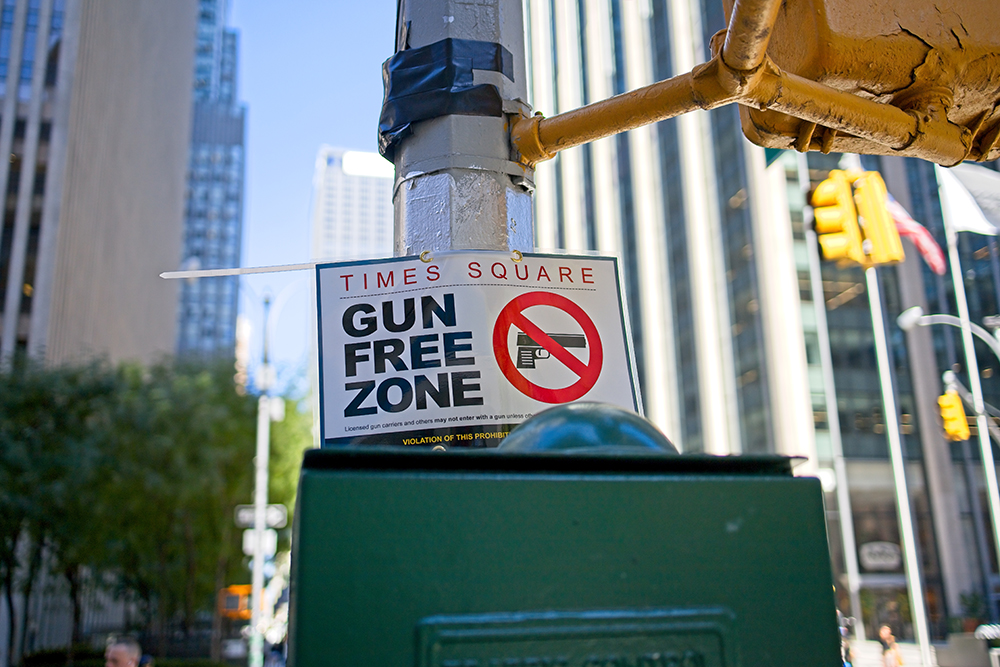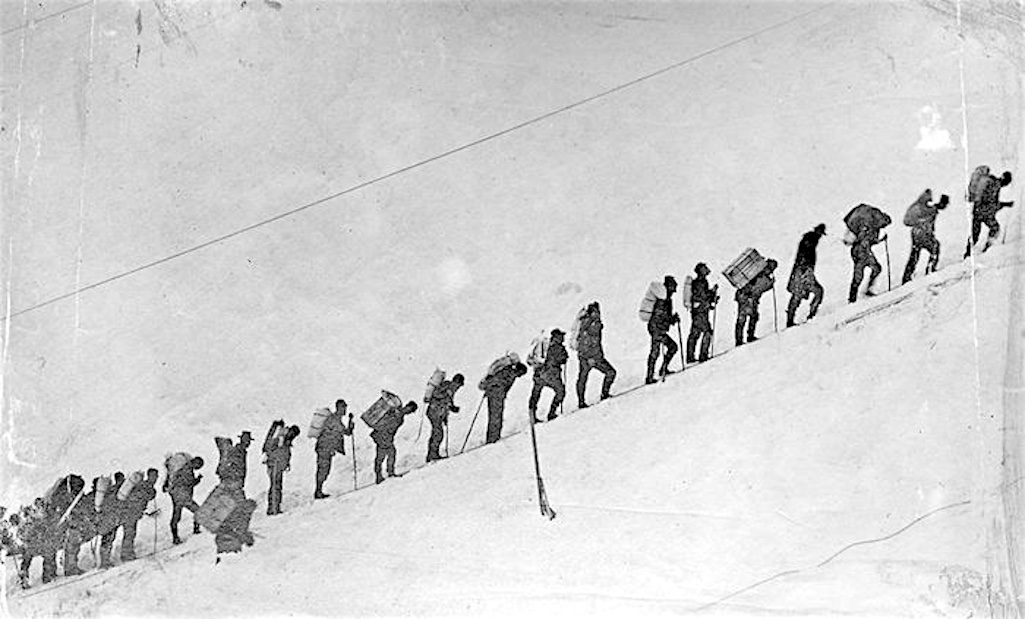Recently, a friend and I were conversing about purchasing surplus, used, or previously owned firearms. While discussing the current options available, he noted that the terms used to describe a firearm’s condition seemed to be all over the map and made no sense to him.
To be perfectly honest, I have been acquiring firearms since the early 1960s and took certain things for granted. I never gave the terminology much thought, that is until I tried to explain it to him. Struggling to make sense, I thought the most logical approach would be to start with the basic terminology. I quickly realized my mistake.

Basic Terminology
In the 1950s and ’60s, prior to all the ridiculous regulations, there existed large purveyors of surplus and used arms. They ran full page ads in local news papers all over the country. Back then you just sent off a check, and waited for the mail to deliver the products to your doorstep. No fuss! No muss! No bother!
Some names that come to mind from the misty memory of my mind are Bannerman’s in New York City and Klein’s Sporting Goods in Chicago, but there were many, many more. Some of the terms they used back in the day to describe surplus military rifles stated guns being in Good Shooting Condition, Used but in Very Good Condition, Terrific Buy, Rare Bargain, Ready to Use, While They last, Why Pay More, No More After These Are Gone, Stock Appearance Is Good… and my favorite, Like New.
Most did not have any real objective meaning, but they were fun to read. If memory serves me correctly, I suppose the first attempt to come up with some sort of standard for the terms as applied to their products might have been Fulton Armory when they repatriated a boatload of M1 Carbines from Korea. Surprisingly, some of the terms they coined worked so well (to market that bunch of carbines) that the terms were taken up by others and now apparently mean something, but what I don’t know what.
Some of those terms were: Rack Grade, Field Grade, Service Grade, Correct Grade, and Collector Grade, but what exactly did they mean? To my way of thinking, they were subjective terms designed to place an escalating pricing scheme on them and it worked. Collector sounded better than Rack, so I figured I’d pay more for it, but what exactly was I getting? There was no way of knowing for sure.
It was not any better than Good Shooting Condition, Used but in Very Good Condition, Rare Bargain, Ready to Use, and Like New, but at least it sounded like it meant something objective — especially if you didn’t know any better.

As more surplus arms became available, and more entrepreneurs got in the game, additional terms appeared in print and at gun shows everywhere. Some creative types stole terms from Numismatic Collectors, terms that applied to coins, paper currency, and medals. From them we got, Uncirculated, Mint Condition, Minty, Mint Like, and Near Mint. I personally like ‘After Dinner Mint’ and ‘Mint Julep’ but that’s just me.
I am sure you realize that these terms are really assumptions and not descriptions — especially when it veers from coins to firearms. Was it uncirculated, and what does that even imply with firearms? ‘Like’ or ‘near’ mint? Firearms are manufactured not minted. So, how much use, wear, or firing would ‘near mint’ imply?
Some terms that would seem at first like they would apply to firearms weaken with examination such as, As Issued Condition or Configuration. What does that mean exactly? Issued to who and when? Many surplus arms have been issued multiple times and not only to units in the manufacturing country but to multiple countries multiple times.

I suppose my favorite statement occurs when someone is describing a M1 Carbine or Garand and asks, or better yet states, that the firearm in question has “All Matching Numbers.” First off, if someone mentions, “All Matching Numbers” they know nothing — or assume that you know nothing about Carbines or Garands.
The only numbers on a GI M1 Carbine are the serial number on the rear of the receiver with the maker’s name and the manufacturers name and date on the barrel. Sometimes numbers are encountered on the operating slide, but those are drawing blueprint numbers assigned to the part not to the specific firearm. The only other mark is on the front receiver ring stating, U.S. Carbine Cal .30 M1 on two lines.
That said, all parts on a M1 Carbine (made by one of the contracted prime manufacturers) are marked with an ‘assigned makers’ mark. Carbines with all the correctly marked parts, for their specific date of manufacture, are worth more to collectors but are of no real value as a shooter. As for Garands, other than the serial number one does find, drawing numbers (also called blueprint numbers) on some select parts.
Those drawing numbers will not “match” anything, because U.S. production did not rely on matched parts. You can, however, have “all correct drawing numbers for the date of manufacture” of a specific Garand. Despite erstwhile internet experts saying that various serial numbers mean its a mix master gun, or one assembled from numerous other guns, to make one sound shooter is hogwash.
The simple truth is, if you have a Garand with matching part numbers, some bozo got an engraver’s set for Christmas and went berserk. They’re drawing numbers, not serial numbers! There is no such thing as “matching” numbers on U.S. small arms after the era of the Colt and S&W revolvers.
U.S. small arms are made with interchangeable parts. As such, they have no need to match anything for manufacture or repair. As for the drawing numbers, they literally cannot match, because each part has its own number, and each revision number (dash number) was the result of an upgrade of that part.
As a final comment on Garands, most of them (now in existence outside museums) have been upgraded and repaired many times, so one with all appropriate drawing numbers for their date of manufacture is unusual and may bring a bit more on the collector’s market. Mixed ones, neither add to nor detract from the value.

There is, however, a category of firearms that the term ‘all matching numbers’ does apply — firearms of foreign manufacture, the most famous of which are German Lugers. Those numbers are either numeric or alpha numeric — usually the last two or four digits of the serial number. Considering the dates of manufacture, these matching numbers tell us nothing about the safety or condition of the particular example. When purchasing a firearm, shouldn’t that be of your utmost consideration?
Function and Condition
One needs to keep in mind that most surplus military arms are at least 60 years old, and many are much older. The most popular are 75–110 years old, and most terms only describe the cosmetic appearance. However, even that is in subjective terms. What you should really be concerned with is how much the functioning parts are worn and whether they are safe. The type of wear might give some indication as to the type of abuse that has occurred.
If there is pitting, is it cosmetic or structural? Was the firearm issued to a military unit or to law enforcement. Is the wear from holster leather polishing the finish, or is it worn from the elements in the field. Is it cosmetic, or are parts worn? Is the wear corrosive? The only way to determine such things is to use instruments to measure the amount of wear and the hardness of the parts to determine whether they are safe.

Before you decide to ‘never buy and shoot surplus firearms,’ fear not! There is some light at the end of the tunnel and that would be the NRA’s grading system. It provides a standardized evaluation system. Following is a brief description of their terms and what they mean. Please keep in mind that grading guns is a very subjective process. The NRA guide was designed to help eliminate some disparity between people’s opinions.
The NRA’s guide was developed by the NRA Museum and covers both ‘Modern Guns’ (shown below) and ‘Antique Firearms.’ The NRA also has photographs of the different amounts of surface wear to provide a better understanding of its terms.
NRA Modern Gun Condition Standards
New: Not previously sold at retail, in same condition as current factory production.
Perfect: In New condition in every respect. (Many collectors and dealers use “As New” to describe this condition).
Excellent: New condition, used but little, no noticeable marring of wood or metal, bluing perfect, (except at muzzle or sharp edges).
Very Good: In perfect working condition, no appreciable wear on working surfaces, no corrosion or pitting, only minor surface dents or scratches.
Good: In safe working condition, minor wear on working surfaces, no broken parts, no corrosion or pitting that will interfere with proper functioning.
Fair: In safe working condition but well worn, perhaps requiring replacement of minor parts or adjustments which should be indicated in advertisement, no rust, but may have corrosion pits which do not render article unsafe or inoperable.
Parts or Repair: These guns are broken or missing parts. They need to be repaired and checked by a gunsmith before using. However, they are not necessarily in worn condition. Though ‘not functioning,’ they may sometimes be in very nice condition.

I would like to revisit the terms Rack, Field, Service, and Correct, because they are used by the CMP. Although it is used as a marketing tool to establish pricing, they try to maintain some standardization. The following is a brief presentation of the terms as they use them. We will only look at the Rack Grade fully here.
CMP Grading Criteria
Rack Grade: (Fair) Most of these rifles have been refinished or rebuilt several times while in military service and will have some parts from other manufacturers. ‘Wear’ will be exhibited by worn and mixed colors of the finish; there will be rust and pitting on the metal parts; wood is sound but may be well used with minor hairline cracks, poor fit, many digs, scratches, and gouges; wood may not match in color, type of wood or condition.

These rifles may have some foreign parts and wood may be Walnut, Birch, Beech, or other variety. Bores will be dark and poor; the barrel crown may be nicked, and the muzzle may gauge more than “3” on muzzle gauge. The throat erosion may gauge more than “5”. The rifle is head spaced with a field gauge and function fired. The overall appearance, and condition of the rack grade, will generally be rougher than any other grade.
As you can see, although the CMP uses the previously established terms, it makes a good effort at defining each term for reliable consistency for the purchaser to make a sound decision. Following are some additional terms used for other grades. Consult the CMP web site for complete descriptions of each grade.
Field grade: (Fair to Good)
Service grade: (Good to Very Good)
Correct grade: (Very Good to Excellent)
Collector grade: (Excellent)
I hope this helps provide some understanding of the different terms and systems used to describe surplus and used firearms that might help your decision making process on your next purchase. Stay safe, train often, and practice, practice, practice!
Have you ever thought about firearms grading? Do you have a favorite method that you follow? Ever feel disappointed or misled after purchasing a firearm? Share your stories in the Comment section.





